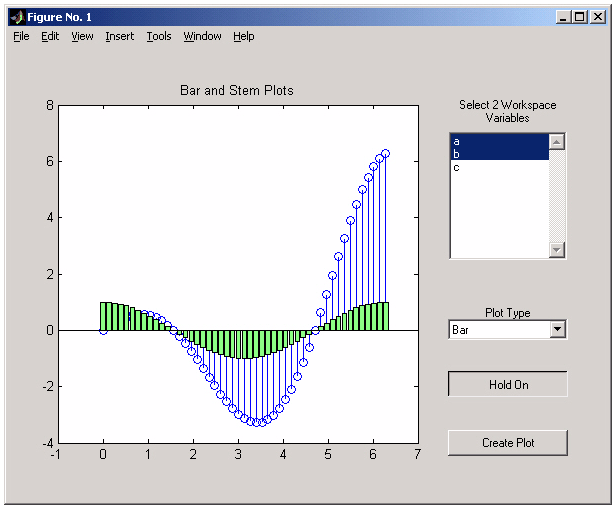

It serves as a unique, practical guide to Data Visualization, in a plethora of tools you might use in your career. More specifically, over the span of 11 chapters this book covers 9 Python libraries: Pandas, Matplotlib, Seaborn, Bokeh, Altair, Plotly, GGPlot, GeoPandas, and VisPy.
CPLOT FIGURE HANDLE HOW TO
It serves as an in-depth, guide that'll teach you everything you need to know about Pandas and Matplotlib, including how to construct plot types that aren't built into the library itself.ĭata Visualization in Python, a book for beginner to intermediate Python developers, guides you through simple data manipulation with Pandas, cover core plotting libraries like Matplotlib and Seaborn, and show you how to take advantage of declarative and experimental libraries like Altair. ✅ Updated with bonus resources and guidesĭata Visualization in Python with Matplotlib and Pandas is a book designed to take absolute beginners to Pandas and Matplotlib, with basic Python knowledge, and allow them to build a strong foundation for advanced work with theses libraries - from simple plots to animated 3D plots with interactive buttons.
CPLOT FIGURE HANDLE FOR FREE
✅ Updated regularly for free (latest update in April 2021)

✅ 30-day no-question money-back guarantee One Axes has one scale, so we create a new one, in the same position as the first one, and set its scale to a logarithmic one, and plot the exponential sequence. This time around, we'll have to use the OOP interface, since we're creating a new Axes instance. # Plot exponential sequence, set scale to logarithmic and change tick colorĪx2.plot(exponential_sequence, color= 'green')Īx2.tick_params(axis= 'y', labelcolor= 'green') # Generate a new Axes instance, on the twin-X axes (same position) # Plot linear sequence, and set tick labels to the same colorĪx.tick_params(axis= 'y', labelcolor= 'red') t -1:0.1:1 x sin(2pit) y cos(2pit) figure plot(x) figure plot(y) Output: There are two figures, Figure1 and Figure2 in the output, but there will only be one figure with one plot if we don’t use the figure command. Linear_sequence = Įxponential_sequence = np.exp(np.linspace( 0, 10, 10)) Let’s plot two graphs on two different figures using the figure command. The axes are counted along the top row of the Figure window. (‘ ”).Let's change up the linear_sequence a bit to make it observable once we plot both: import matplotlib.pyplot as plt selects the p th axes object for for the current plot, and returns the axis handle.
CPLOT FIGURE HANDLE FULL
NOTE: make sure when typing the full name or initials, write then in the single inverted commas. Legend handles dont have to exist on the Figure or Axes in order to be used. (“b” = blue, “r”= red, “g”= green, “c”= cyan, “m”= magenta, “y”= yellow, “k”= black, “w”= white.) plt.plot(, 'y') The text which describes the handle represented by the key. By simply mentioning the initials of the colors.Another way is by using grayscale intensities as a string (‘0.8’).By using the RGB or RGBA tuples ((0,1,0,1)).You can change the color by using hex strings (‘#008000’).You can change the color by using full names color =”red”.In the brackets, if you don’t mention the line color as shown above by default, it chooses the bluecolor.Using the plt.plot method type the points or lines that you want to plot.The keyword arguments ( **kwargs) are used to change the colors. There are many ways by which you can change line color in matplotlib python.įirst, make sure that matplotlib is installed. Changing the color of lines in matplotlib You can change the colors of markers, points, and lines using this method. There are also various markers you can use to show lines or points. But we will focus on the line graph for the sake of simplicity. Using matplotlib we can implement various types of graphs such as bar graph, pie chart, scatter graph, etc. In this tutorial, we will learn how to change line color and other attributes in matplotlib in python.


 0 kommentar(er)
0 kommentar(er)
